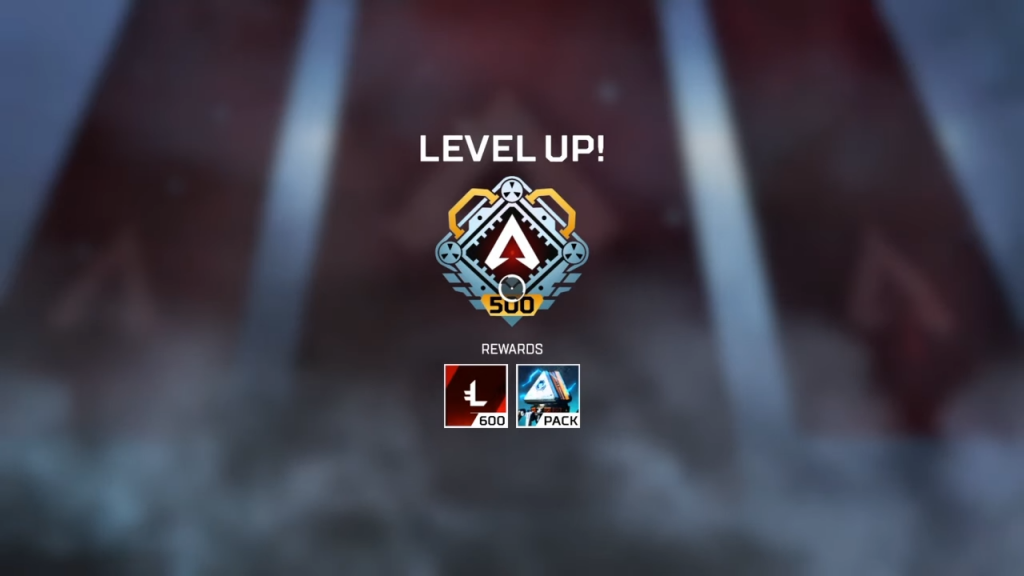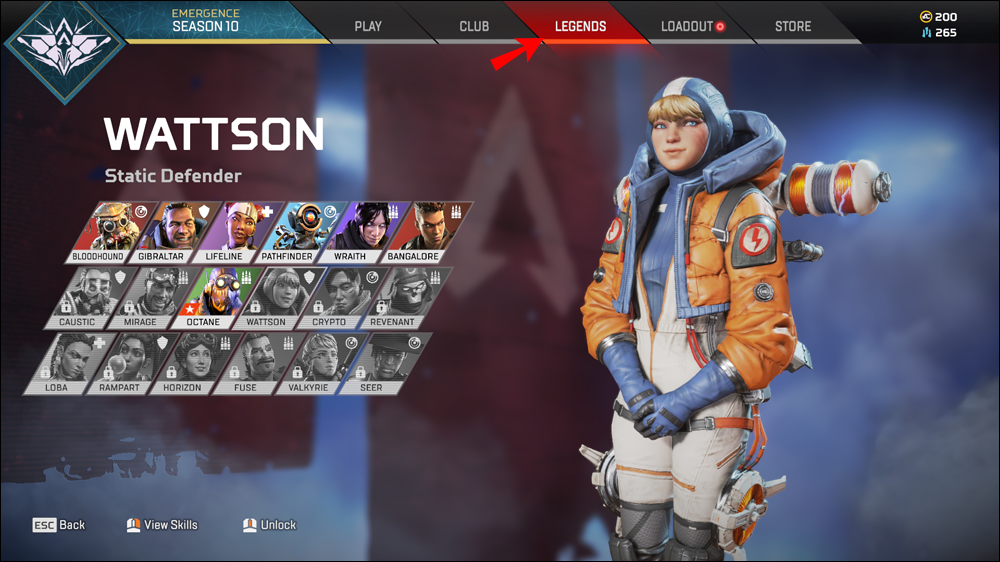Legend Tokens are just one of four Apex Legends currencies players will encounter in the game. While other currencies are a bit more difficult to get, obtaining more Legend Tokens is relatively straightforward. As long as you’re playing the game often, you should have no problem amassing more than enough Legend Tokens for everything you need.
Here is what you need to know about getting more Legend Tokens in Apex Legends and what you can do with them.
How to Get Legend Tokens Fast in Apex Legends
There’s no quick way of getting a massive amount of Legend Tokens when you’re a new player. The only option for all players to get Legend Tokens is to get enough experience (EXP) and level up their Apex account.
At first, the experience requirement for leveling starts slow but ramps up until Level 58 and stays there until the max level (500). However, the level cap only prohibits you from getting more Apex packs via leveling up. After you reach Level 500, getting enough experience for a ‘level up’ will provide more Legend Tokens.
Each time you level up (or gain a virtual level after the cap), you get 600 Legend Tokens. There are no other ways to get this currency in the game, and you can’t even buy it with real money.
The experience you gain inside a match depends on several factors, significantly influencing how fast you can level up and earn Legend Tokens. Here are all the possible experience gains in a single match and boosts you can acquire:
- Winning a match gives you a tremendous experience (EXP) boost, and landing among the top five teams in the game gives you a minor EXP boost.
- This EXP gain can be further increased by purchasing the current season’s battle pass. Each season, players can get up to 300% more EXP for winning or being in the top five teams.
- Kills and damage also play a big role in getting more EXP. Players who can consistently reach high damage numbers can get more EXP this way than almost any other.
- Kill leaders (players with the highest kill count) get a small amount of EXP as well. If you happen to lose that title during the match, you keep this EXP.
- The first kill of the day grants a considerable EXP boost, so at least go for that if you don’t have a lot of time during the day.
- Reviving and respawning teammates provide a slight EXP boost. This boost isn’t particularly noteworthy since you ideally don’t want to get into the situation of respawning teammates in the first place.
- Killing the match champions awards a significant EXP boost, especially since each champion team member has the EXP bounty.
- Similarly, you get a decent sum of EXP if you’re the champion heading into the match.
- The final, and probably the most reliable, way to get a solid chunk of EXP every match is to simply survive. You get more EXP for each second you’re alive, as a so-called survival bonus.
- The survival bonus is increased by 5% for each party member you have heading into the match. That means you can get 10% more passive experience by playing in a party with two friends.
Your EXP gain will be prominently displayed after each match, along with complete breakdowns by the categories mentioned above. This way, you can track what gives you the most EXP during a match and strategize to improve your game plan.
One of the easiest, although probably most boring, ways to get EXP is to use the survival bonus and just stay alive for as long as possible in a match, avoiding combat unless necessary. However, this EXP gain is negligible compared to the possibility of getting multiple kills. Overall, aggressive gameplay and kill-focused plans will probably yield more EXP in the long run.
With all that said, you really shouldn’t worry about getting EXP if you just need more Legend Tokens. Regular gameplay will usually be more than enough to amass tokens quicker than more stuff comes out to spend it on.

How to Check Legend Tokens in Apex Legends
Unlike Apex Coins and Crafting Metals, your current amount of Legend Tokens isn’t visible on the screen at all times. However, showing your current Legend Token balance is quite simple.
All you have to do is hover over the currency count in the top right corner, the one showing how many Apex Coins (yellow ones) and Crafting Metal (blue currency) you have. A pop-up display will show a breakdown of how much of each currency you own, minus the Heirloom Shards, which are a somewhat different category of valuables.
How to Use Legend Tokens in Apex Legends
Since Legend Tokens come in a theoretically infinite quantity, there are also ways to spend these Tokens pretty much indefinitely.
Buying Legends
The primary way most players will get acquainted with Legend Tokens is their use in unlocking more playable Legends. With the character roster constantly evolving with each passing season (roughly three months), new players need more Legend Tokens to unlock every Legend they want to play.
Each Legend costs 12,000 Legend Tokens, apart from ones that every player starts with for free (Gibraltar, Lifeline, Wraith, Pathfinder, Bloodhound, and Bangalore).
The primary way to buy new Legends is direct via the Legend menu:
- Select the “Legends” tab on the top bar.

- Right-click on a Legend you haven’t unlocked.

- Select which currency you want to use (preferably Legend Tokens).

- Confirm your choice.

Alternatively, you can go through the “Store” menu in the top bar, then select the “Legends” tab on the right. This way, you can see which Legends you can purchase.

Rerolling Daily Challenges
Legend Tokens are also helpful for completing your current season Battle Pass a bit quicker or more conveniently. While they don’t offer a straight-up boost, you can reroll your daily challenges by paying some Legend Tokens.
The first reroll of the day is always free, the second one costs 200 Tokens, the third one costs 500, and every one after that will cost you 1,000 Tokens. When rerolling, you can choose game mode challenges (Arenas or Battle Royale) and receive a challenge exclusively for that game mode (or one that counts all game modes).
To reroll a challenge, click on it. The UI will show a spinning arrow circle to indicate a reroll. All you have to do is confirm your choice, and you’ll receive a new challenge. Rerolling a challenge resets its progress. You can’t reroll a challenge you’ve completed for extra stars during a day.
All rerolls and reroll costs refresh at the same time players receive new daily challenges. Weekly challenges or event-specific challenges cannot be rerolled.
Featured Recolors
The final way players get to spend their hard-earned Legend Tokens is in the “Featured” store section. This store contains only recolors of existing skins, and these recolors can’t be earned in any other way.
To purchase a recolor, you need to own the original skin, which will usually be Legendary or, in some rarer cases, Epic quality.
Recolors cost either 6,500 or 10,500 Legend Tokens, depending on the store offers.
To look at the currently available recolors, select the “Store” tab on the top bar. You should immediately land on the “Featured” tab, or you can click it to display the featured store.

Always Something New to Buy in Apex Legends
Thanks to the abundant supply, you can pretty much use Legend Tokens any way you want. For a start, we recommend purchasing Legends to give you more options in-game. After that, you can reroll challenges or purchase recolors to your heart’s content.
What are you spending your Legend Tokens on first? Let us know in the comment section below.
Disclaimer: Some pages on this site may include an affiliate link. This does not effect our editorial in any way.













